NEW GEOGRAPHY--Among urban historians, Southern California has often had a poor reputation, perennially seen as “anti-cities” or “19 suburbs in search of a metropolis.” The great urban thinker Jane Jacobs wrote off our region as “a vast blind-eyed reservation.”
The Pavlovian response from many local planners, developers and politicians is to respond to this criticism by trying to repeal our own geography. Los Angeles’ leaders, for example, see themselves as creating the new sunbelt role model, built around huge investments Downtown and in an expensive, albeit underused, subway and light-rail network.
Yet the notion of turning Southern California into a dense, New York hybrid makes very little sense. Nor has it done much for the regional economy, certainly in Los Angeles. The City of Angels thrived during its period of development into a multipolar region; in the 21st century, as Downtown has gained a few thousand hipsters, the rest of the city has lagged economically while population and job grow th – including in tech – has been more robust in the surrounding counties of Orange, Riverside and San Bernardino.
Building off Strength
Southern California, even before the advent of the freeways, developed along the lines of an “archipelago of villages.” Even Downtown Los Angeles, the one legitimate urban core in the region, lost its central relevance by the 1930s and, despite all its self-promotion, employs close to the smallest share – well short of 3 percent – of the regional workforce of any large region in the country.
In contrast, the two fastest-growing areas in Southern California – the Inland Empire and Orange County – are arguably the largest regions in the country without a real downtown. Rather than a negation of urbanity, as some suggest, these areas are nurturing an expansive archipelago of smaller hubs, each serving distinct geographies, populations, tastes and purposes, and constitute the building blocks for Southern California’s urban future.
The advantages of such districts are obvious. They allow people to live as most prefer, in single-family homes, lower-density townhouses or apartments, while having easy access to a walking environment. In many cases, most notably Irvine, there is employment nearby, leading to very short commutes on average. This multipolarity is essentially baked into the Southern California cake; it cannot be transformed without massive economic disruption, and enormous expenditures on transit have so far done little to reduce gridlock or spur broad economic growth.
The Urban Archipelago
Urban theorists are correct that people, particularly the young, like walkable, often unscripted, urban areas. But that is very different from saying that they want to live in or near high-density for most of their lives. Indeed, as economist Jed Kolko has shown, people’s propensity for living in high-density locales diminishes markedly once they enter their 30s. This milestone looms within a few years for most millennials.
So when we think about urban strategy in places like the Inland Empire or Orange County, we have to see it as fulfilling two different missions: dense areas that serve as magnets for young people or childless couples, but also as places that the vast majority of people – who wish to live in suburban-style homes – can visit and enjoy. As urban hipsters grow up, these nodes continue to allow easy access to trendy food, live music or boutique shopping.
This trend can be seen in the Inland Empire, which has been roundly castigated as the “most sprawling region” in the country. The lively remake of downtown Riverside, or in some new projects being developed in places like Rancho Cucamonga, suggest there is an emerging market for this kind of low-intensity urbanization in the area.
The tendency is more evolved in Orange County, which is far more dense and where land costs are higher. In fact, O.C. is becoming a hothouse for experimentation in a basically suburban setting, including developments on former farmland, such as the Irvine Spectrum, as well as vintage downtowns such as in Orange, Fullerton, Laguna Beach and Santa Ana. Some of the more recent signature manifestations of urbanism Orange style include:
• Anaheim’s old Sunkist House and the surrounding area evolved into the “Packing District,” where young and old alike try fusion cuisine, socialize and listen to live music. Awarded Commercial Project of the Year at the Golden Nugget Awards, the renovated building and its lineup of gourmet shops, along with the new surrounding housing units and Center Street Promenade, provide a cultural hub within a larger suburban fabric.
• The emergence of Costa Mesa as one of the best midsize cities for food in the nation, with out-of-state icons such as Halal Guys and Raising Caine’s finding their way in the fray. The OC Mix is a group of stores in an industrial complex offering artisanal shops, restaurants and space for working and lounging around. The LAB, one of the early purveyors in the Costa Mesa creative scene, with its anti-mall concept, has become a breeding ground and role model for Orange County “hipness.”
• Huntington Beach’s new Pacific City complex pays obeisance to the area’s laid-back beach culture, providing foosball tables, movie screens and space to simply hang out. Besides a few anchor tenants, mostly local merchants, chefs and bartenders will call it home, and the complex plans to incubate restaurateurs at its food hall. Similar to the recently built Residences at Bella Terra, Pacific City could attract new apartment dwellers seeking urban life with a coastal escape just next door.
Toward an Urban Pluralism
Many of these developments have created among some Southern Californians a sense that a way of life is being undermined. A megadevelopment at Beach Boulevard and Edinger Avenue in Huntington Beach has been scaled down from 4,500 new housing units to 2,100, largely due to vigilant complaining and locals’ desire to maintain their “Mayberry by the Sea.”
Some Tea Party and right-wing activists see densification as a grand plot by advocates of world government, but it is less a matter of conspiracy than of conflicting interests and ideologies.
But activists, as well as NIMBYs, have a point. The current planning regime run from Sacramento would like to constrain suburban lifestyles as much as possible. State policy, notes veteran area developer Randall Lewis, is forcing developers to create projects so dense – up to 20 units per acre – that they barely satisfy the privacy needs or preferences of the middle-class families the region needs to attract and retain. “We would want to have the free market work, and developers pick what they can sell,” Lewis said.
In fact, the state’s densification strategy, notes Rancho Cucamonga City Manager John Gillison, has intensified opposition to new production of multifamily units from residents fearful that their lifestyles are being targeted. “It’s made it a lot tougher to push density,” he notes.
A far more logical approach would be to embrace what the urban historian Robert Fishman once described as “urban pluralism,” fostering the development of housing irrespective of type, largely following market forces.
As part of this approach, cities need to assure residents that their single-family neighborhoods can remain intact, while allowing for “infill development” in underused or abandoned areas, including former warehouses, deserted shopping areas or factories. Some projects, such as in Costa Mesa and Anaheim, where there is already a dense infrastructure, might be more ambitious, while other locales, like Old Town Orange, Tustin or Laguna Beach, may seek to retain more to keep a mid-density, small-town feeling.
“What works in Santa Monica does not work so well in Ontario,” notes developer Lewis.
The prospects are excellent for building on our multipolar pattern. The growth of telecommuting – already used by more workers than transit across the whole region – allows for people to cluster in their chosen communities including, if they choose, in close-in urban enclaves close to private co-working spaces such as Costa Mesa’s Crashlabs.
Thirty years ago, transit users accounted for five times the workforce share as stay-at-home workers. This has totally reversed. The growth of ride-booking services, like Uber, and the expected advent of autonomous vehicles also suggest that car-dependence, the scourge of revelers in suburbia, can be reduced.
Technology and a fair understanding of our past provide the preconditions for Southern California’s resurgence as an urban trendsetter. Given that most of America more resembles Southern California than New York or San Francisco, we are well-positioned to shape a bold 21st century urban future.
(Joel Kotkin is executive editor of NewGeography.com and Roger Hobbs Distinguished Fellow in Urban Studies at Chapman University, and a member of the editorial board of the Orange County Register. He is also executive director of the Houston-based Center for Opportunity Urbanism. His newest book, The New Class Conflict is now available at Amazon and Telos Press. He lives in Orange County, CA.
Charlie Stephens is a researcher and MBA candidate at Chapman University’s Argyros School of Business and Economics and founder of substrand.com.)
-cw
CityWatch
Vol 14 Issue 7
Pub: Jan 22, 2016










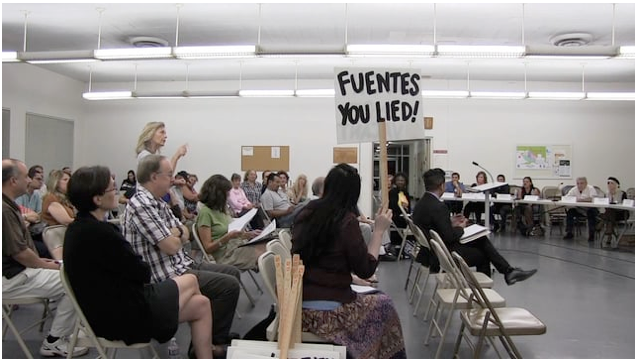

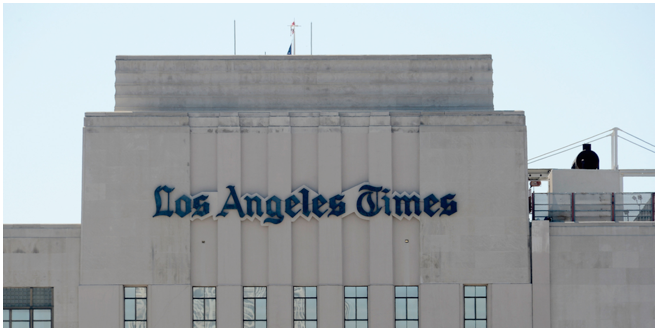


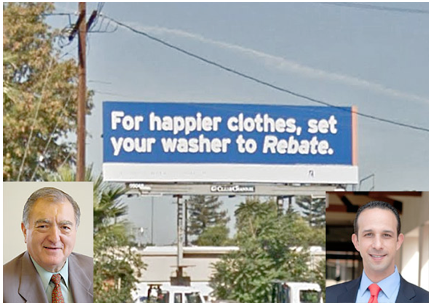
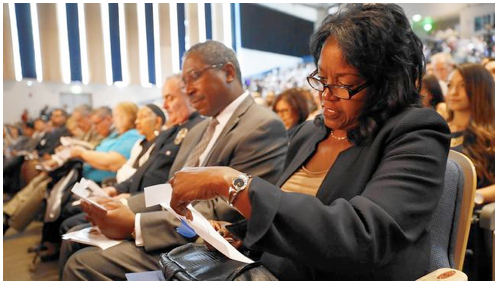
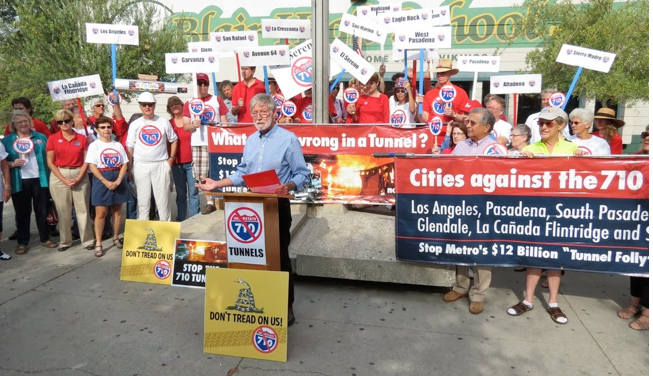


 Kroenke will benefit not only from his investment in the Inglewood entertainment complex, but also from the increase in the value of the Los Angeles Rams (v. the St. Louis Rams) over and above the $550 million relocation fee that the NFL will extract from the team.
Kroenke will benefit not only from his investment in the Inglewood entertainment complex, but also from the increase in the value of the Los Angeles Rams (v. the St. Louis Rams) over and above the $550 million relocation fee that the NFL will extract from the team. 



 Riordan cautions against placing too much zoning control in the hands of single council members. “That person is being lobbied by the developers and getting campaign money or campaign promises and this just has to end,” he warns. (Photo right: So-called Palladium Project that prompted the ballot measure.)
Riordan cautions against placing too much zoning control in the hands of single council members. “That person is being lobbied by the developers and getting campaign money or campaign promises and this just has to end,” he warns. (Photo right: So-called Palladium Project that prompted the ballot measure.) 













